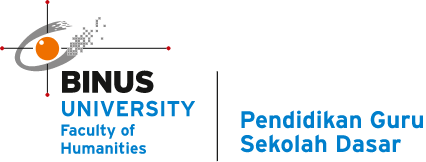Jigsaw Cooperative Learning Model
Oleh:
Suwarno
Cooperative learning refers to a variety of teaching models, including students working together and helping each other in small groups to learn subject matter (Slavin 2015). According to Zuliana (2010), cooperative learning is learning with students as a learning center. Also, the results of the identification of cooperative learning models over the past twenty years have shown that this model can be used effectively at every grade level and in various subjects (Slavin 2015). Based on the description, it can be concluded that the cooperative learning model is a learning model that can involve students in learning activities and can improve group cooperation in students. Also, this learning model can be used in various levels of classes and various kinds of subjects effectively.
Permendikbud (2014) states that there are characteristics of cooperative learning, including:
1. To complete the learning material, students learn in groups cooperatively.
2. Groups are formed from each student who has different abilities.
3. If the class consists of several races, ethnicities, cultures, different sexes, then each group should be mixed.
4. Awards are preferred to group work rather than individuals.
The cooperative learning model is not new in the world of education, many years ago teachers have used it in the form of laboratory groups, task groups, discussion groups but the latest research in America and other countries has created systematic and practical learning models to use (Slavin 2015). One of them is the jigsaw cooperative learning model; this learning model was developed by Elliot Aronson et al. (1978). The jigsaw cooperative learning model is one type of cooperative learning that focuses on collaboration in small groups to help each other in learning subject matter (Lestari and Yudhanegara 2015). Also, in this technique, students work in the same group members, but with different backgrounds (Slavin 2015). From several opinions, it can be concluded that the jigsaw cooperative learning model is a learning model that focuses on teamwork or small groups that provide information to each other in the team or group.
Eggen and Kauchak (2012) states, the jigsaw has two main characteristics. Namely, jigsaw designed to teach the building of systematic knowledge (organized bodies of knowledge) and jigsaw includes one element called task specialization (tasks specialization). The main feature of the jigsaw type cooperative learning model mentioned by Eggen and Kauchak also refers to the characteristics in which the learning model consists of two groups, namely the original group and the expert group. With the existence of a group of experts, students can discuss the same material with other students. Furthermore, in the original group, students must explain the content that has been discussed with the expert group to their group friends. This is very useful for sharpening students’ insight into the material that has been obtained from the teacher.
According to Slavin (2015) in the type of jigsaw cooperative learning, the scores contributed by students into their groups are based on the scores obtained from each score income. At the end of learning, students and groups with improved grades will get an award from the teacher. Based on this, each student will be motivated to study their respective material seriously and try hard in their expert group so they can help their group do their job well. This study uses jigsaw steps by Slavin (2015). The jigsaw type of cooperative learning steps is as follows.
- Students are divided into several groups (each group of members is five or six).
- Everyone in the original group gets different material assigned by the teacher.
- Members of each different group and have got the same material to gather to form a new group (expert group) to be able to discuss their content together.
- While the expert group works or has discussions, the teacher observes the processes that take place in each group. If there are group members who have difficulty in explaining the material that is their responsibility, the teacher reminds or gives direction so that the group leader or other group members to help the member.
- After finishing the discussion, each expert group member returns to the original group and takes turns teaching their group mates about the material they are mastering, while the other group members listen carefully when the other group members present the results of the discussion in the expert group.
- If there are students who do not understand, the teacher will explain.
- Evaluate by giving training at the end of the lesson.
- Give awards to groups that get the highest score.
References
Depdikbud. 2014. “Peraturan Menteri Pendidikan Matematika SMP.” Peraturan Menteri Pendidikan dan Kebudayaan Republik Indonesia. Jakarta: BSNP, hal. 321-428.
Eggen, Paul, dan Don Kauchak. 2012. Strategi dan Model Pembelajaran (Mengerjakan Konten dan Keterampilan Berpikir). Jakarta: PT Indeks.
Lestari, Karunia Eka, dan Mokhammad Ridwan Yudhanegara. 2015. Penelitian Pendidikan Matematika. Bandung: PT Refika Aditama.
Slavin, Robert E. 2015. Cooperative Learning (Teori, Riset dan Praktik). Bandung: Nusa Media.
Zuliana, Eka. 2010. “Meningkatkan Kemampuan Komunikasi Matematika Peserta Didik Kelas VIII B MTs N Kudus Melalui Cooverative Learning Tipe Jigsaw Berbantuan Kartu Masalah.” Refleksi Edukatika, hal. 17-33.

Comments :